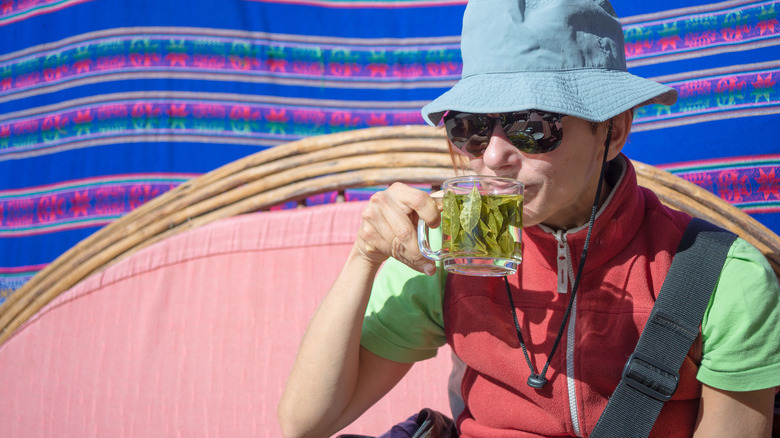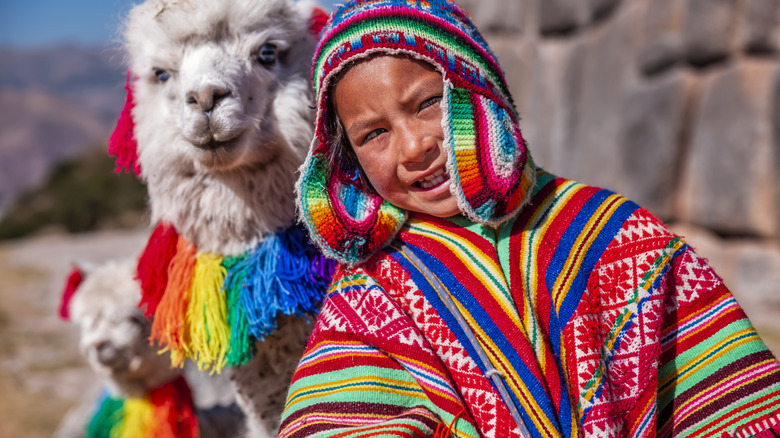When it comes to fueling your wanderlust, there’s no destination that combines the allure of history with the vibrancy of modern day life like Peru. From its rugged and mountainous landscapes to its white-sand beaches, electrifying cities, and top foodie destinations, there’s no shortage of activities and sights for visitors to enjoy. However, when we think of Peru, there’s one specific destination that continues to capture travelers’ attention: the iconic Machu Picchu.
An ancient Inca city located in the Peruvian Andes Mountains — sitting at a whopping 7,972 feet above sea level — Machu Picchu welcomes roughly 1.5 million visitors every year. Designated as a UNESCO World Heritage Site in 1983, the ruins are accessible via train and bus through the town of Aguas Calientes. However, there’s a third option that the most adventurous travelers tend to choose: walking. Known as the Inca Trail, the 4-day trek departs from Chilca (on kilometer 82 of the Cusco – Machu Picchu train line) and weaves through 24 miles of mountains, forests, and various other remains of Incan buildings before ending in Machu Picchu.
A good pair of hiking boots and camping gear aside, there’s one more thing that local guides recommend hikers pack in order to help them deal with the unpleasant effects of altitude that most visitors aren’t used to: a healthy dose of coca leaf tea.
How does coca leaf tea help with altitude sickness?

Coca leaves have been a traditional remedy for combating altitude sickness — among other things — for centuries. Either by chewing them or boiling them into tea, local indigenous communities in the Andes have relied on them for various reasons: from battling pain and fatigue to suppressing hunger and thirst when walking for long periods of time.
But how exactly do these leaves work? Although there isn’t enough scientific evidence to say for sure, their efficiency can be attributed to the fact that the leaves contain minor traces of alkaloids. These, in turn, help enhance your energy levels as well as your body’s oxygen uptake by slowing down the production of red blood cells — which is especially helpful at higher altitudes where oxygen becomes scarce. Ultimately, this extra boost helps fight altitude-related symptoms like headaches, fatigue, and nausea.
And while we’re at it, it’s important to clarify that coca tea is very different from cocaine. While cocaine is derived from the same leaves, the drug undergoes a significant chemical process that strays far from the leaves’ original spiritual, medicinal, and cultural purposes. In contrast, coca tea and raw leaves contain only a trace amount of these compounds, which makes them perfectly safe for consumption and legal in many parts of South America. However, keep in mind that, although the leaves are legal in Peru, U.S. Customs strictly prohibits travelers from bringing them back into the country.
Other ways to fight altitude sickness

If you’re planning on visiting the site — whether trekking there or not — it’s important to note that most experts warn you should never travel directly to Machu Picchu after arriving in Peru. Otherwise, altitude sickness might put an abrupt stop to your trip. Instead, you’ll want to spend a few days acclimatizing — as in, getting used to the higher altitude — before heading out. A great spot for this is Cusco. Located over 11,000 feet above sea level (FASL), the city is a great starting point for getting your body used to the new heights. Alternatively, there’s also the Sacred Valley. Considering that Cusco is located at a much higher altitude than both Machu Picchu and the Sacred Valley, a stop in destinations like Pisac (9,776 FASL), Ollantaytambo (9,350 FASL) or Urubamba (9,416 FASL) might be the better option for a gentler shock to the system.
Along with getting acclimated, another important step you can take to prevent altitude sickness from hitting too hard during your visit is staying hydrated. When your body reaches a higher altitude, you start to lose more water because of the dryer air, the rapid breathing, and the more frequent bathroom trips. Because of this, hydration is key in order to keep your body working in top shape: from collecting more oxygen in the lungs to keeping your cells energized and your body cool.

